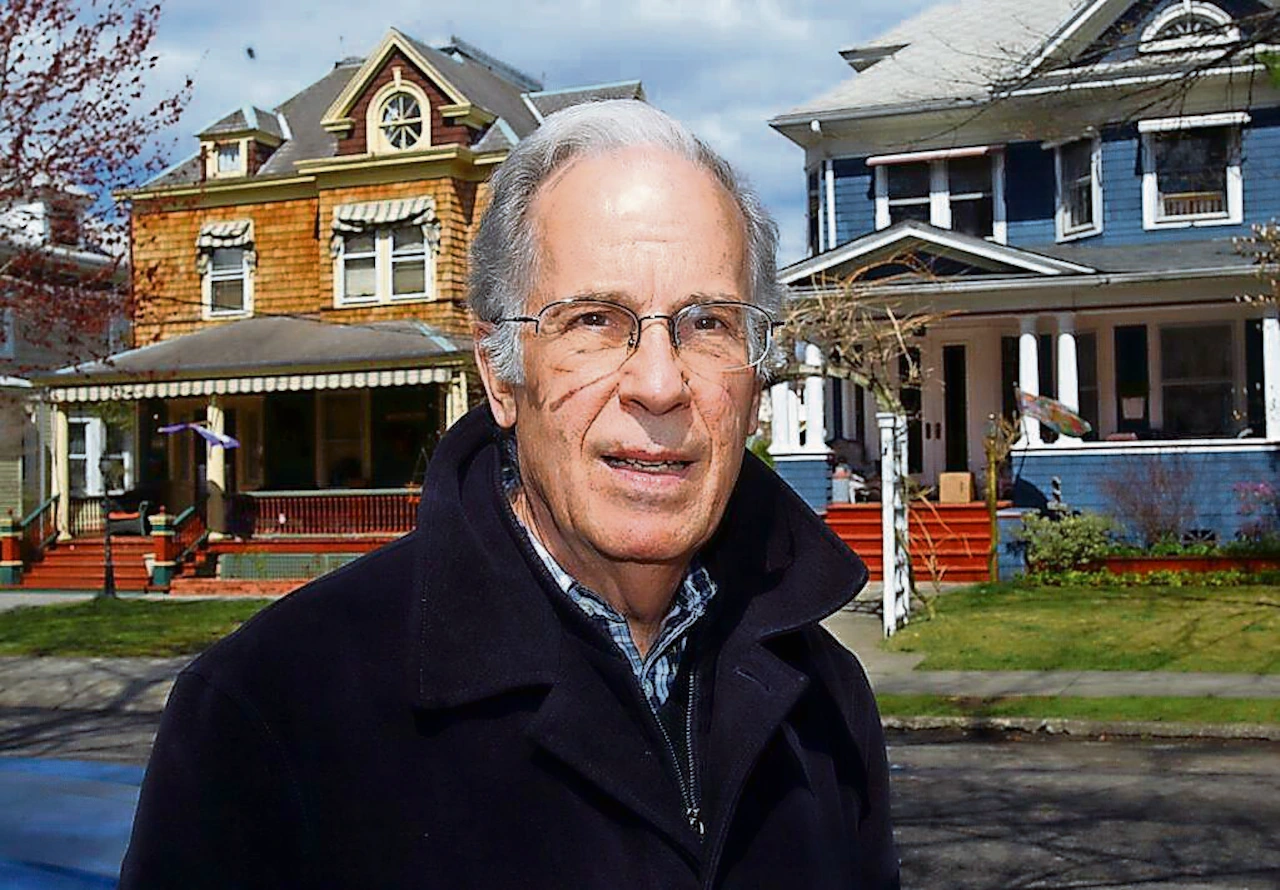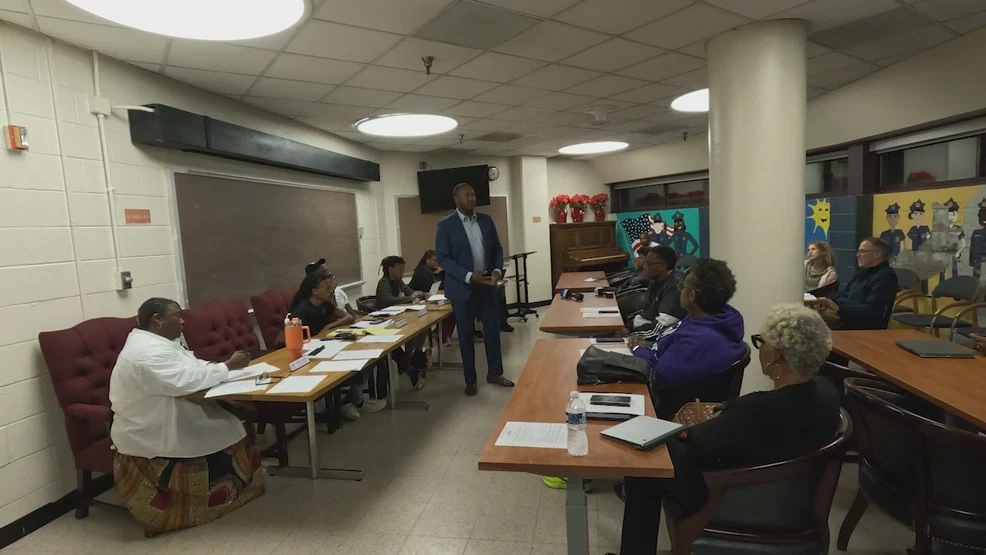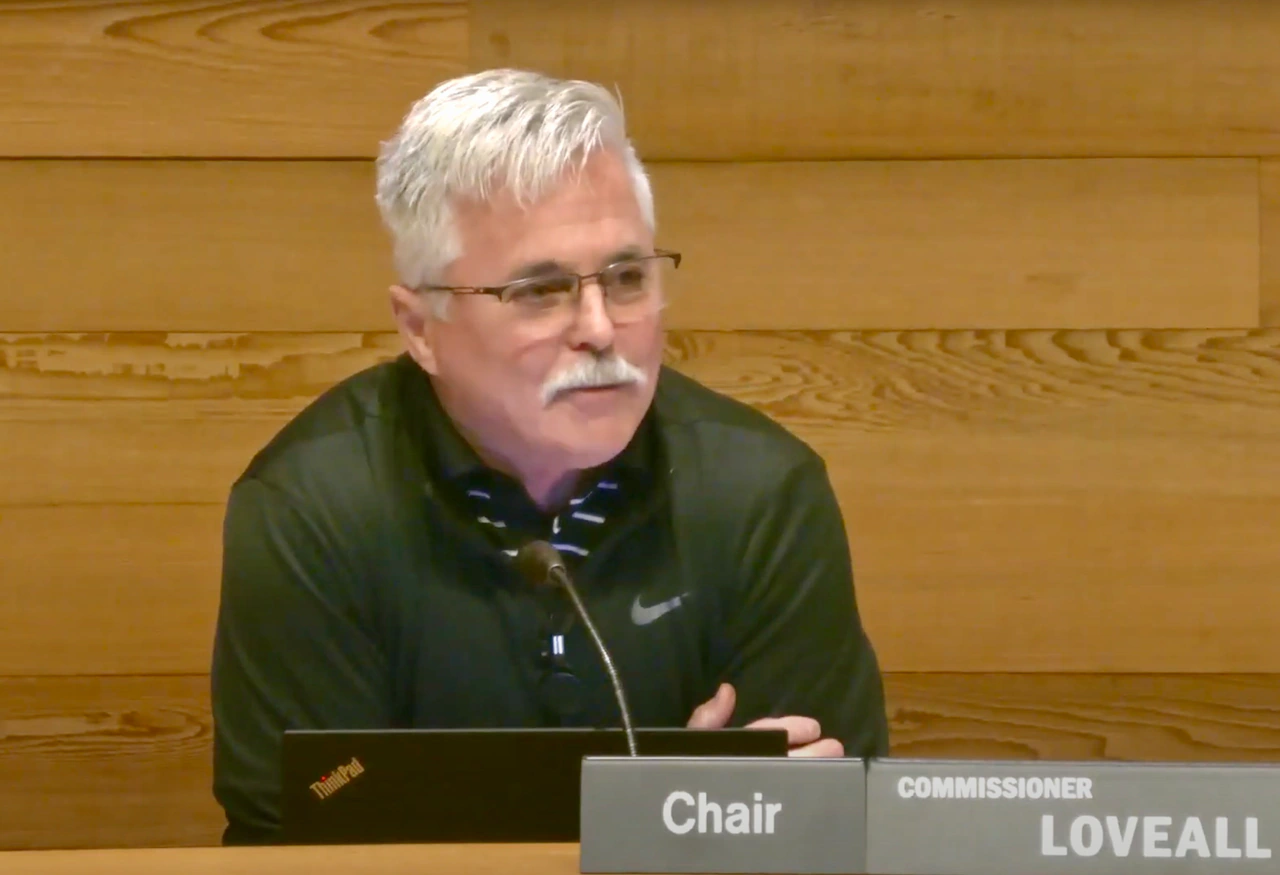Barnett Shepherd dies. A premiere preservationist, historian and visionary, he safeguarded Staten Island history | Life Stories

STATEN ISLAND, N.Y. – He couldn’t move mountains, but he came close to it on an October morning in 1987.
When a developer planned to demolish a 19th-century farmhouse in Greenridge to make way for 900 townhomes, Barnett Shepherd jumped into action. As executive director of Historic Richmond Town, he arranged to acquire the house for $20,000 and move it to the historic village.
Permits were secured, streets were closed, trees were trimmed and utilities were disconnected for the 2.5-mile move of the Jacob-Crocheron House to its current safe haven on Richmond Road.
That same conviction would save countless other historic sites under Mr. Shepherd’s watch as Staten Island’s premiere preservationist, historian and visionary. His death on August 6 at the age of 87 highlighted his work to safeguard the borough’s history as development surged, often unchecked, following the opening of the Verrazzano-Narrows Bridge.
“Barnett knew very well that fighting to preserve old buildings is often an uphill battle because funding and resources are never easy to come by, and time and nature are always taking their toll,” said Sarah Clark, former curator at Historic Richmond Town. “He taught me that it’s always worth it to keep trying, even when progress seems slow.”
FIRST, A MINISTER
Born on July 26, 1938 in St. Joseph, Mo., Isaac Barnett Shepherd spent his early childhood in Greenville, Miss., where his father worked at the United States Gypsum Company and his mother ran a millinery shop.
The family moved to Clark, N.J., for his middle school years, and then to Oregon for high school. By then, Barnett had set his sights on becoming a Presbyterian minister to serve his local community and push for racial integration across the nation.
He earned a bachelor’s degree in English literature from Alma College in Michigan and a master of divinity degree from Union Theological Seminary in Manhattan. After his ordination in 1964, he served at a Presbyterian church in Birmingham, Ala., and as an associate minister for education in Columbus, Ind.
Feeling restless and unfulfilled, he enrolled in Indiana University and earned a master’s degree in art history. He taught briefly at the University of Florida before heading to New York City in 1972 to “satisfy a greater love for art and culture,” he later explained.
He moved in with friends George McLain and Tilda Norberg, both Methodist ministers, and enjoyed communal living in their New Brighton Victorian home.
To make ends meet, he worked as a legal typist on Wall Street and a janitor at a Unitarian church before landing a position at the Staten Island Museum, where he completed an architectural survey of the borough.
Mr. Shepherd joined volunteer efforts to transform Snug Harbor into a cultural center. In July 1976, he served as tour guide for Jacqueline Kennedy Onassis as she visited the Livingston site, escorting her across the grounds with other dignitaries while explaining ambitious plans for restoration.
“She soaked up everything Barnett had to say,” recalled Alice B. Diamond, supporter of the arts and founding board member of the Snug Harbor Cultural Center, who joined the tour that day.
The following year, Mr. Shepherd established the Preservation League of Staten Island, which continues its important work today.
“The situation was very grim” in the beginning, he said in a 2012 interview with the New York Preservation Archive Project. “There was a great fear of the landmarks designation and no one wanted to support our efforts.”
He joined the Historic Richmond Town staff as registrar in 1979, and was named executive director and CEO in 1981. His early theological training came in handy as he bartered with builders and negotiated with city managers to strengthen the village and save Staten Island’s historic structures from decay and demolition.
“His style was ministerial,” summarized Charles Sachs, a friend and former Richmond Town colleague, referring to his gentle demeanor and strong skills as a listener and mediator.
“My work at Richmond Town was a continuation of my ministry,” Mr. Shepherd shared in 2012. “The ministry involves working with people and accepting people and understanding people. The values are, in many ways, identical. I was very happy that I was able to make this transition in my professional career in a way that has enriched my life and helped my community.”
HISTORIC RICHMOND TOWN
During his 19-year tenure at the 100-acre site, Mr. Shepherd guided plans and funding for the $1 million renovation of the Historical Museum, led the restoration of four buildings and the roofing of 14 additional buildings, and oversaw the design and construction of the Edna Hayes Collections Care building.
The Stephens-Prier House, circa 1857-1859, also became part of the village under his leadership, and still serves as the main administrative building on the site.
He tackled projects big and small at Richmond Town. Russell Powell of Island Housewrights, a restoration firm, recalled collaborating with Mr. Shepherd to restore the bell tower of the Third County Courthouse after it was damaged by lightning in the summer of 1986.
“I found Barnett to be unfailingly calm and thoughtful in his communications,” Powell said. “He would ask meaningful questions about the restoration process, and offer insightful suggestions, taken from his own experiences.”
He had “a deep commitment to Historic Richmond Town’s history, people and buildings,” Powell added. “Looking back, I feel he was the perfect steward during his time there. And he was a gentleman in the truest sense of the word.”
Mr. Shepherd solicited help from Scouts and other community volunteers to keep the white fence around the property freshly painted.
He returned to Richmond Town for six months in 2017, when the board of directors asked him to fill a temporary void in leadership.
SKILLED RESEARCHER
A meticulous researcher and prolific writer, Mr. Shepherd was the author of several books on Staten Island history and architecture. In 1995, he published his first book, “Sailors’ Snug Harbor, 1801-1976,” about the rich history of the former retirement home for seamen.
Working with the Tottenville Historical Society, he surveyed 250 buildings as research for “Tottenville: The Town the Oyster Built,” published in 2003.“Staten Island Scenery: Paintings. Prints, Drawings and Photographs” was published in 2013, and “The Staten Island Ferry: A History,” published in 2008, was co-authored with Patricia Salmon, also an historian.
“Barnett was the first and only choice for writing the section on September 11, 2001,” Salmon said. “Accuracy was important, but this section needed someone with compassion, tact and empathy — qualities that he truly possessed.”
In 2004, Mr. Shepherd completed a successful historic district designation report for the St. Paul’s Avenue-Stapleton Heights Historic District.
He enjoyed collaborating with local organizations, including the Friends of Olmsted-Beil House, the Tottenville Historical Society and the Mud Lane Society for the Renaissance of Stapleton.
“Barnett Shepherd was the consummate researcher,” Salmon said. “He didn’t double-check information — he triple-checked and even quadruple-checked it for verification. As the saying goes, he left no stone unturned.”
She added: “The breadth of work that Barnett has left us is enviable — not only because the information is precise, but because it will stand through the ages.”
In 2019, Mr. Shepherd was honored by the New York Landmarks Conservancy with the Lucy G. Moses Preservation Award at the Plaza Hotel in Manhattan.
“Barnett Shepherd is ‘Mr. Preservation’ on Staten Island,” said Peg Breen, president of the conservancy in presenting the award. “No one has done more to save and promote the Island’s historic treasures.”
GARDENER AND COLLECTOR
Mr. Shepherd delighted in tending to the gardens surrounding the historic home outside the gates of Snug Harbor he shared with his spouse, Nick Dowen. The yard is lush and colorful with the magnolia trees and crape myrtles he planted.
He also gardened outside the Stephens-Prier House at Richmond Town, lining the front pathway with a variety of flowering plants.
He was a collector of artwork and artifacts. As a supporter of the Noble Maritime Collection on the grounds of the Snug Harbor Cultural Center, Mr. Shepherd donated a collection of 60 prints to the museum in recognition of John Noble’s work as a printmaker.
Mr. Shepherd was active in Christ Church New Brighton, where he served on the search committee for a new rector and raised funds for the restoration of 10 frosted glass windows. He and Nick Dowen were marred in the historic church in October 2024.
Mr. Shepherd was passionate about his work as an historian.
“The study of history broadens our horizons as individuals,” he told the New York Preservation Archive Project. “You can stand in the shoes of other people in times past and become more sensitive to people in your present environment.”
Though characteristically humble, he reflected on his legacy in that same interview.
“My publications will live on after I’m gone and I feel wonderful about that. Everywhere I go, people know who I am and recognize what I’ve done. And they want to help me.
“I’m happy that this has been my life, in this community. In spite of all the discouragement here about preservation, it brings together wonderful people. We’re a small community within a community. I think my publications and my work of restoring individual properties at Historic Richmond Town and other places will be my contribution.”
SURVIVORS AND ARRANGEMENTS
In addition to his spouse, Nick Dowen, survivors include an older brother, Clarence H. Shepherd III; a younger brother, Mark, and several nieces and nephews. Mr. Shepherd was predeceased by his mother, the former Marjorie Lancaster, and his father, Clarence H. Shepherd Jr.
Arrangements, which included private cremation, were handled by Harmon Home for Funerals, West Brighton.
A memorial service for Mr. Shepherd will take place on Saturday, Sept. 20, at 10 a.m. in Christ Church New Brighton, followed by lunch in the Parish House auditorium. In lieu of flowers, donations can be made to Historic Richmond Town and Christ Church New Brighton.
CONDOLENCES
Jessica Phillips, executive director and CEO of Historic Richmond Town: “Barnett was a visionary advocate for Staten Island’s history and one of the borough’s most dedicated stewards of its built environment. He laid the foundation for the museum village as we know it today — expanding the site, preserving critical structures, and advancing the mission of public history on Staten Island. His legacy will live on in every building saved, every story told, and every visitor inspired by this community he helped to shape.”
Alice B. Diamond, arts advocate and Snug Harbor Cultural Center founding board member: “Barnett and I bonded over the Southern influence in our lives. He helped our group of volunteers unearth scrapbooks and clippings about Snug Harbor’s history as the cultural center took shape. I enjoyed visiting Barnett and Nick [Dowen] in their home, filled with beautiful antiques. He was a star gardener, a gentleman and a friend.”
Maxine Friedman, former curator at Historic Richmond Town: “It was Barnett who gave me the opportunity to join the Historic Richmond Town staff in 1990. I feel fortunate to have worked closely with him on many projects, including notable accomplishments like completing the Edna Hayes Collections Care Building, Richmond Town’s first state-of-the-art climate-controlled building. We worked together on exhibitions, grants, collections care projects — more than I can count. What always struck me most about Barnett was his passion — for Historic Richmond Town, for historical research and preservation, and for sharing our history, not only with current visitors, but with future generations as well. He was a kind, caring, and generous man, and he leaves an incredible legacy for the Staten Island community.”
Sarah Clark, former curator at Historic Richmond Town: “In 2017, during his period as interim executive director, Barnett asked me to accompany him to a workshop for New York City cultural workers about understanding unconscious bias. I remember how earnestly he approached it, how honest and humble he was, asking good questions and really listening to understand. I think his ability to focus on listening is part of what made him such a great mentor and a great historian — he genuinely wanted to hear everyone’s point of view and to make sure Historic Richmond Town was able to connect with many different groups of people.”
Kamillah Hanks, City Council member (via Facebook): “As chair of the Council’s Landmarks Subcommittee, I join preservationists across the city in mourning the loss of Barnett Shepherd — a true giant in the field and a tireless guardian of Staten Island’s historic fabric. Long before preservation was fashionable, Barnett was sounding the alarm and organizing to save the structures and stories that define our borough. His work at Historic Richmond Town and his founding of the Preservation League of Staten Island stand as testaments to his vision, his scholarship, and his unwavering commitment to the power of place. Staten Island is a richer, more rooted community because of Barnett Shepherd — and we are all indebted to his legacy.”



